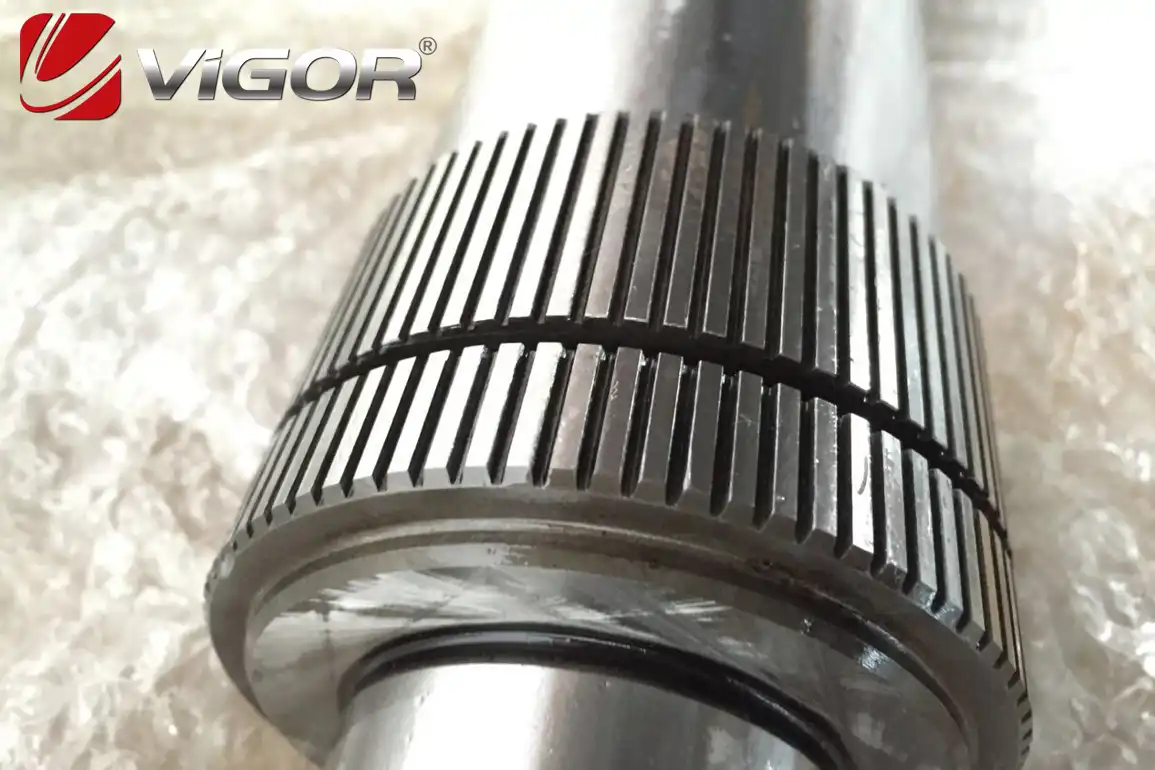
Knowledge
Key Points of Quality Control in Production of Spline Shafts
Production and processing precautions
Selection of raw materials:
Suitable steel grades such as 40Cr and 20CrMnTi should be selected to ensure that the chemical composition and mechanical properties of the material meet the design requirements. At the same time, the appearance quality of the raw materials should be inspected to ensure there are no cracks, folds, or scars.
Precision of processing equipment:
The processing of splined shafts requires high-precision equipment such as milling machines and grinding machines. Regular maintenance and precision checks of the equipment should be carried out to ensure that all parameters are normal and prevent processing errors due to equipment precision degradation.
Selection and wear of cutting tools:
According to the processing technology and material properties of the splined shaft, appropriate cutting tools such as high-speed steel tools and carbide tools should be selected. During processing, the wear of the cutting tools should be closely monitored, and worn tools should be replaced in a timely manner to avoid dimensional deviations and surface quality degradation caused by tool wear.
Processing sequence:
The processing sequence should be reasonably arranged. Generally, rough machining is carried out first to remove most of the material, followed by semi-finishing and finishing to ensure dimensional accuracy and surface quality. During the processing of splines, the selection of cutting parameters should be carefully considered to avoid spline deformation due to excessive cutting force.
Heat treatment process: Splined shafts usually require heat treatment such as quenching and tempering to improve their hardness and wear resistance. During heat treatment, the heating temperature, holding time, and cooling rate should be strictly controlled to prevent defects such as overheating, overburning, deformation, and cracking.
Cooling and lubrication during processing:
Adequate cooling and lubrication during cutting can reduce cutting temperature, reduce tool wear, and improve surface quality. Appropriate cutting fluids should be selected, and their flow rate and pressure should meet the processing requirements.
Clamping and positioning of parts:
During processing, the clamping of parts should be firm and positioning accurate. Improper clamping methods may cause parts to shift or deform during processing, affecting processing accuracy.
Key points of quality control
Dimensional accuracy control:
The dimensional accuracy of splined shafts includes outer diameter, inner diameter, key width, keyway depth, etc. These dimensions directly affect the fit accuracy with other parts. During processing, high-precision measuring tools such as micrometers, calipers, and go/no-go gauges should be used for measurement, and adjustments and controls should be carried out strictly in accordance with process requirements.
Key Points of Quality Control
Shape and position accuracy control:
Shape accuracy mainly includes roundness and cylindricity, while position accuracy includes coaxiality, parallelism, and perpendicularity. By optimizing the processing technology, improving equipment precision, and using advanced measurement techniques, the shape and position accuracy of splined shafts can be ensured to meet design requirements.
Surface quality control:
Surface quality includes surface roughness, surface hardness, and surface residual stress. Reasonable selection of cutting parameters, tools, and cutting fluids, as well as appropriate heat treatment and surface treatment, can effectively improve the surface quality of splined shafts.
Non-destructive testing:
To detect internal defects such as cracks in splined shafts, non-destructive testing methods such as magnetic particle testing and ultrasonic testing are usually used. Non-destructive testing should be carried out after key processes to ensure that defective products do not flow into the next process.
Sampling inspection:
A complete sampling inspection system should be established, and a certain proportion of the processed splined shafts should be inspected. Inspection contents include dimensional accuracy, shape and position accuracy, and surface quality to ensure the stability and consistency of product quality.
Quality traceability:
During production, a quality traceability file should be established for each splined shaft, recording information such as raw material batch, processing equipment, processing personnel, processing time, and inspection data. Once a quality problem is found, it can be quickly traced back to the source of the problem, and corresponding improvement measures can be taken.
If you have any question, demand, new parts development or improve your supply chain, please feel free to contact us info@castings-forging.com




